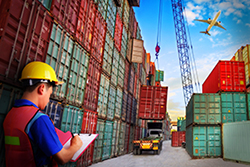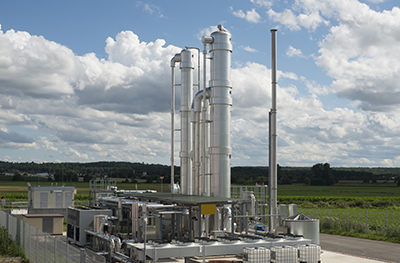Life Cycle & Technoeconomic Modeling
Life Cycle & Technoeconomic Modeling
Our group conducts unbiased analysis to evaluate the cost implications and environmental impacts of a wide range of energy technologies and strategies. This information is used to support decision-making by groups including researchers, industry stakeholders, regulators, and stakeholders.
 Evaluate and Analyze
Evaluate and Analyze
Life Cycle Assessment (LCA) and Technoeconomic Analysis (TEA) can be applied to a wide variety of established and emerging energy technologies and strategies.
- LCA is a method that can be used to evaluate the potential environmental impacts of a product, material, process, or activity. An LCA is a comprehensive method for assessing a range of environmental impacts across the full life cycle of a product system, from materials acquisition to manufacturing, use, and final disposition. We also consider scenarios where environmental impact drivers change over future time horizons.
- TEA refers to cost assessments, including cost of production (minimum selling price at facility gate) and life-cycle cost (total cost of ownership, which may include monetized externalities). TEA often requires researchers to take performance data for new technologies operating at very small scale, envision and design commercial-scale configurations, and estimate costs for scaled-up operations. Model outputs help identify potential market applications and injections points, and provide an estimate of long-term impacts.
These methods — in conjunction with other forms of decision analysis — help guide technology development and improvement targets, inform comparative pathway decisions, and provide guidance through early
identification and mitigation of financial or technical challenges. Check out our ongoing projects and areas of research:
Bioenergy Research
In collaboration with the Department of Energy's Joint BioEnergy Institute (JBEI) we provide comprehensive assessments of advanced biological routes to producing biofuels and bioproducts through our work in JBEI's Life-cycle, Economics, and Agronomy Division (LEAD). We lead the division's work, which includes field trials of engineered, mutant, and wild-type sorghum; chemical process modeling; life-cycle assessment (LCA) modeling; and high-resolution geospatial feedstock and logistics modeling. The goal is to identify traits that make bioenergy crops amenable to deconstruction while remaining resilient to pests and drought, develop biorefinery configurations that maximize product yields and minimize energy and water requirements, and select fuels and products that meet the needs of the U.S. and global markets. More information can be found on the JBEI website:
www.jbei.org/research/technoeconomic-and-life-cycle-analysis/
 Waste-to-Energy and Products
Waste-to-Energy and Products
We assess economic, social, and environmental impacts of waste to energy and resource technologies including:
- Distributed generation using organic waste-to-energy technologies in California, including analysis of dry, anaerobic digestion of organic waste in California
- Management of ash, char, and digestate from organics waste-to-energy technologies
- Management of concentrated process waters and brines from carbon capture and sequestration and the oil and gas industry
- Management and utilization of captured carbon dioxide from carbon dioxide capture and sequestration
- Management and utilization of stranded, low grade, methane-rich waste gases from fossil and biogenic sources.
Forecasting Energy Consumption Implications
We built and maintain the Lifecycle Industry GreenHouse gas, Technology and Energy through the Use Phase (LIGHTnUP tool). This analysis tool supports the Department of Energy's Advanced Manufacturing Office for strategic analysis and includes individual technology project evaluations, program planning processes, and technology road mapping.
Our team conducts Life-Cycle Analysis (LCA) of Low-TRL (Emerging) Technologies. We participate in a collaborative project with LCA experts to develop methods & guidelines for applying LCA techniques and concepts to low-TRL (emerging) technologies in order to: A) Accelerate technology maturation, B) Improve performance and costs, and C) Minimize unforeseen risks.
Manufacturing Cost Levelization Model, a general TEA and LCA model tool, can be applied to any manufacturing or electricity generation technology to estimate total manufacturing costs and provide improvement analysis, including:
- Emerging (Low-TRL) Technologies - extrapolating R&D cost and performance data to scaled-up manufacturing costs estimates to help guide technology research and development towards an eventual cost-effective product.
- LCA and TEA of Information and Communication Technology (ICT) systems, from data center to end-user devices, detailed at cleermodel.lbl.gov
- TEA of zero-net energy (ZNE) cost effectiveness for new residential homes in California.
- TEA of costs and benefits of implementing low-global warming potential A3 (flammable) refrigerants for small cooling equipment.
